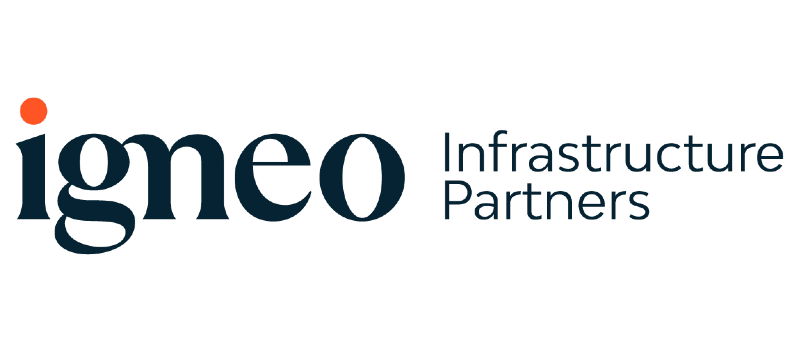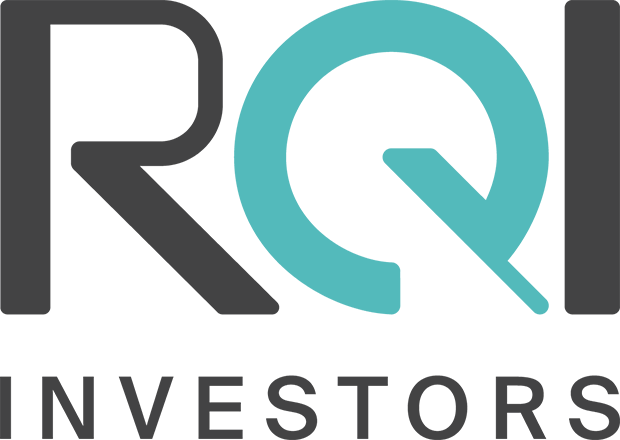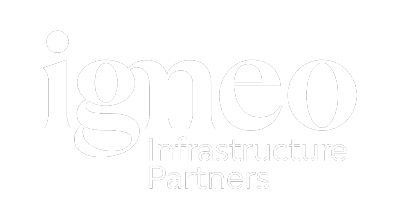Climate related litigation against directors and trustees is increasing globally. As the science around climate change evolves, how companies prepare for and manage these issues will be increasingly in the spotlight. As climate impacts grow, so do the duties, risks and implications for both companies and investors. Below is a brief summary of the fourth Climate Change Whitepaper – Fiduciary & Directors duties and legal risks for companies.
Overview
Historically, the catch-cry of ‘fiduciary duty’ was often raised to justify inaction on climate change. This was based on the narrow assumption that climate risk was a non-financial issue – regard to which would be contrary to the directors’ obligation to pursue the best (financial) interests of the company.
With that ‘non-financial’ framing, the question around directors’ duties regarding climate change remained mired in a debate around whether it was permissible to have regard to it at all.
In recent years, however, there has been a significant shift in mainstream market understanding of the nature of climate change as a foreseeable and often material financial risk. This evolution has been discussed in detail in the first three papers in this series.
With that evolution, so too has the debate on the relevance of climate change to the discharge of directors’ duties. While previously some questioned whether directors could consider climate change at all, there is now a recognition that in the majority of cases they must consider it in the same way as they do for any other foreseeable financial risk.
Accordingly, the relevant duties-based inquiry has become whether the process of evaluation applied to the issue is robust enough to discharge their obligation of due care and diligence.
The evolution of climate related risk
Recognition of potentially material business risk and opportunities stemming from climate change and other environmental issues is not new. The US Securities and Exchange Commission has addressed disclosure requirements for environmental issues as far back as the early 1970s and in 2010 released specific guidance related to climate change.
“Legal, technological, political and scientific developments regarding climate change may create new opportunities or risks for registrants. These developments may create demand for new products or services, or decrease demand for existing products or services… These business trends or risks may be required to be disclosed as risk factors or in MD&A.”
–SEC Commission Guidance Regarding Disclosure Related to Climate Change, 2010.
While different in important respects, trustees of investment trusts and company directors share some important duties. While director duties require them to act in the best interests of the company and trustees must act in the best interests of beneficiaries as a whole, both are required to discharge their duties with due care and diligence.
In addition to their statutory and common law obligations, many markets have corporate governance codes for companies and a growing number of markets have stewardship codes for investors that interpret and flesh out these requirements. International norms developed through organisations like the OECD, the UN Principles for Responsible Investment, and the International Council on Mining and Metals, underpin the broad acceptance of ESG and climate change issues as relevant business and investment issues.
In recent years initiatives ranging from Sustainable Stock Exchanges, EU Directive 2014/95/EU on non-financial disclosures, the UK Law Commission’s review of Fiduciary Duty, changes to UK Corporations Law that requires directors to have regard for environmental and social impacts, among others, have further cemented the view that ESG factors are material business and investment factors.
Due Care and Diligence – a duty to manage material and foreseeable risks
In 2015 Mark Carney (the Governor of the Bank of England), described the threat to financial system stability posed by climate change.
“There are three broad channels through which climate change can affect financial stability:
- First, physical risks: the impacts today on insurance liabilities and the value of financial assets that arise from climate- and weather-related events, such as floods and storms that damage property or disrupt trade;
- Second, liability risks: the impacts that could arise tomorrow if parties who have suffered loss or damage from the effects of climate change seek compensation from those they hold responsible. Such claims could come decades in the future, but have the potential to hit carbon extractors and emitters – and, if they have liability cover, their insurers– the hardest;
- Finally, transition risks: the financial risks which could result from the process of adjustment towards a lower-carbon economy. Changes in policy, technology and physical risks could prompt a reassessment of the value of a large range of assets as costs and opportunities become apparent.”
The previous three papers in this series offer a host of examples and evidence that demonstrate the financial materiality and relevance of climate change to many different types of businesses, both now and in the future. These crosscutting issues relate to the physical, regulatory and transition risks and opportunities posed by climate change and the response to it.
Recent legal opinions on director and fiduciary duties in relation to climate change view these risks as not only potentially material but also “foreseeable”. This view is supported by factors including:
- the increasing certainty of climate science as expressed through the Intergovernmental Panel on Climate Change process and various other reports from diverse and reputable institutions;
- the physical impacts from extreme weather and other more chronic impacts which are increasingly and more confidently being linked to climate change; and
- the Paris Climate Change Agreement which sets clear goals to limit global warning to “well-below 2°C” approaching 1.5°C, which as at 25 June 2019 had been ratified by 185 countries.
Critically the foreseeability of the risks make them inappropriate to ignore. Where the issue is then found to be material other actions become warranted. It is the process of assessing and determining the materiality and appropriate responses to risks which sit at the heart of discharging the director duty of due care and diligence.
Regulator statements also point to the foreseeability of climate risks. In Australia, APRA, ASIC and the RBA have all made increasingly strong statements over the last 2 years. In the UK, financial regulators released a joint statement on 2 July 2019 stating:
“Climate change is one of the defining issues of our time. We recognise it presents far-reaching financial risks relevant to our mandates from both physical factors, such as extreme weather events, and transition risks that can arise from the process of adjustment to a carbon neutral economy. Companies should consider the likely consequence of climate change on their business decisions, in addition to meeting their responsibility to consider the company’s impact on the environment. Financial risks will be minimised by achieving an orderly transition and via a collective response.”
–Joint statement by the Bank of England, Financial Conduct Authority, FRS and the Pensions Regulator.
Map of location and quantity of climate cases up to May 2019.
In October 2016, Australian barrister Noel Hutley SC released a memorandum of opinion, on behalf of Minter Ellison, titled ‘Climate Change and Directors’ Duties’. The key findings of the opinion included:
- Climate change risks would be regarded as foreseeable by courts, and relevant to a director’s duty of care and diligence to the extent that those risks intersect with the interests of the company. For example, by presenting corporate opportunity or risks to the company or its business model.
- Company directors are not legally restricted from taking into account climate change and related economic, environmental and social sustainability risks, where those risks are, or may be, material to the interests of the company.
- Company directors certainly can, and in some cases should be considering the impact of climate change risks on their company – and those directors who fail to do so at the current time could be found liable for breaching their duty of care and diligence in the future.
In 2019 Mr Hutley updated his opinion stating that since 2016 “these matters elevate the standard of care that will be expected of a reasonable director.”
He attributes the escalation to five factors, coordinated regulator action, changes to financial reporting requirements, investor and community pressure, developments in the science and finally developments following litigation.
Potential Consequences for Directors and Trustees
In Hutley’s view, “it is likely to be only a matter of time before we see litigation against a director who has failed to perceive, disclose or take steps in relation to a foreseeable climate-related risk that can be demonstrated to have caused harm to a company.”
As Hutley predicted we are seeing such action, and internationally it has been underway for some time. A recent report by the Grantham Institute has found more than 1,300 cases around the world with the bulk in the United States. While the majority remain against governments, an increasing number are against companies.
While the Grantham Institute found that in the past more cases were decided in favour of those taking action to hinder climate action, since the Trump Administration came into power this has swung the other way with courts generally blocking the administration’s deregulation efforts. Around the world, NGOs have been the fastest growing cohort of plaintiffs over the last 5 years.
Some high profile company examples include New York City against BP, Chevron, ConocoPhillips, ExxonMobil and Royal Dutch Shell; a shareholder class action against ExxonMobil, and a SEC investigation against ExxonMobil, and Cities of New York and Massachusetts against ExxonMobil.
Lawsuits against ExxonMobil allege it misled its investors and the public by failing to disclose risks posed to the business by climate change. Charges range from misleading investors regarding climate change risks, overstating recoverable reserves and fraud. In January 2017 a Massachusetts judge ordered the company to hand over 40 years of climate change research to prosecutors who are investigating.
As climate impacts grow, so do the risks to directors
As the physical impacts of a changing climate become more apparent and scientists become increasingly confident in their attribution of extreme weather events to climate change, companies preparation and management of these issues will be increasingly in the spotlight. PG&E’s bankruptcy following extreme wildfires in California in 2018 are an example of this as it is now subject to a class action lawsuit.
Applicants bringing climate change litigation cases showing increased participation.
Sources: McCormick, Glicksman et al. (2018); www.lse.ac.uk/GranthamInstitute/climate-change-laws-of-the-world/
In addition to securities and corporate law, in July 2017, three Californian communities launched legal action against 37 “carbon majors” (including Shell, Chevron, Statoil, Exxon and Total), seeking compensation for the current and future costs of adapting to sea level rises linked to climate change. According to the complaint, the defendants “have known for nearly 50 years that greenhouse gas pollution from their fossil fuel products has a significant impact on the Earth’s climate and sea levels”. Rather than working to reduce impacts, the complaint claims the companies engaged in a “coordinated, multifront effort to conceal and deny their knowledge of these threats”.
This followed a case filed by a group of teenagers who are suing the US Government for failing to protect future generations implicating Exxon and the US Oil Industry in its case. While these matters are continuing to be investigated and heard by various courts it underlines the risks to company directors if they do not properly address climate change related risks for their businesses. In addition the cost and effort of defending cases, claims such as these pose an investment and business risk in their own right and are reminiscent of the tobacco and asbestos litigation from the 80’s and 90’s.
The likelihood of a successful case is linked to the environment in which directors are making their decisions; In the same way that the appropriate actions for reducing the risk of a house fire in a city apartment versus a high bushfire risk area are different. Similarly, the appropriate actions to take once a fire has started will vary by the location and type of dwelling but also how large the fire is, what type of fire it is and the containment tools available.
Directors considering climate change risks need to recognise their own exposure and the shift in the environment. In the case of climate change, regulators continue to raise climate risks as being insufficiently addressed, the physical and transition impacts from climate change are increasingly apparent and attributable, and the shift towards a low carbon economy is accelerating – in other words the fire is getting bigger on multiple converging fronts.
Many jurisdictions globally apply legal tests of prudence by fiduciaries, which include the reasonable person test. This test is to avoid judging decisions with hindsight and instead determine what a reasonable person would have done with the information available at the time.
In this context it is increasingly difficult for directors to claim a reasonable person would not have acted.
Investor trustees also at risk
Regulators in various markets have spoken about climate change risks and the development of the Sustainable Finance Road Maps in various markets including the EU, Canada, Hong Kong, China, New Zealand and Australia point to increased regulatory oversight of investor activity.
A member of a large Australian superannuation fund is suing the corporate trustee, claiming insufficient consideration and management of climate risk, with the case still pending. The argument put forward by Environmental Justice Australia, on behalf of the plaintiff, is that the physical and transition risks of climate change are now foreseeable, material and actionable by investors given the significant body of scientific research currently available. According to the plaintiff the trustee and administrator had failed to answer questions or provide evidence of any knowledge, opinion, consideration, and action related to climate risk.
In the US, similar actions have occurred but have to date been unsuccessful. Participants in the employee pension plans of Arch Coal, Inc. (Arch) and Peabody Energy Corporation (Peabody) filed class action complaints against their respective companies alleging breaches of the trustee’s fiduciary duty. They claimed that the pension funds retained Arch and Peabody stock as investment options in their respective plans when a reasonable fiduciary would have done otherwise. The complaints allege that defendants should have known that the pension plans’ investments in Arch and Peabody stock were imprudent because of the significant fall in their share prices as a result of the “sea-change” in the coal industry. Causes of this “sea-change” cited include the regulation of carbon dioxide emissions from power plants, and the fall in demand for coal.
Active Ownership further tests company preparedness
One of the clearest and most important levers available to investors is strong stewardship and active ownership practices. Both direct and collaborative engagement with investee companies has been an increasingly important feature of many investors’ approach with these engagements having become more widespread and increasingly strategic.
The Aiming for A Coalition was established in 2012 and included successful engagements and shareholder proposals with companies including Rio Tinto and Exxon.
While Aiming for A included 85 investors, the 2017 Climate Action 100+ initiative includes more than 320 investors managing $33 trillion in assets.
Climate Action 100+ is built around a five-year process of engagement with strategically important emitters focused on improved governance, emission reductions aligned with the Paris agreement and Task Force for Climate-Related Financial Disclosures (TCFD) recommended disclosure by companies.
A related and prominent example of this increased activity is the growth in shareholder resolutions. Resolutions have ranged from the 2 degree stress-testing at the heart of ‘strategic resilience’ resolutions proposed through Aiming for A, to more recent examples which include requests for emission reduction targets to be set, improved disclosures around political lobbying, and remuneration to be linked to emission reductions.
A Ceres database documents over 700 climate related resolutions over the years with strong growth in both the number of resolutions and their support. In 2017 and 2018 environmental and social resolutions comprised over half of all shareholder resolutions lodged (33% in 2006).
Successful engagement has resulted in many proposed resolutions being withdrawn following commitments made by companies to address the issues of concern to shareholders.
The 2018 U.S. proxy season saw a record number of filed proposals related to climate
Climate change-related proposals filed by proposal status and by year; median support level by year
Source: ISS Analytics.
When considered in light of the growing consensus regarding director duties as they relate to climate change and increased investors focus, the decision to vote against the reelection of individual directors who either individually or whose company has a record of failing to address climate change risks is also likely to grow.
Proxy voting is also a clear point of accountability for investors
From a fiduciary and director duty standpoint, shareholder resolutions are particularly relevant for investors as they are not only a means to encourage companies to take greater action on the issue, but given proxy voting decisions are routinely disclosed, it is also one of the few quantitative points of accountability for listed-market investors. Proxy voting is especially relevant for passive investors who may not have other levers like engagement or divestment at their disposal.
NGOs and activists groups are increasingly pointing to investor failure to support resolutions as evidence of ‘greenwashing’. Market Force (Australia), ShareAction (UK) and CERES (US) have all published reports on superannuation fund voting performance in this regard. ShareAction also run the Asset Owners Disclosure Project, which benchmarks the governance and investment approach of asset owners and asset managers as it relates to climate risk.
In the context of due care and diligence, an investor’s proxy voting record can evidence either support or lack of support for climate change action in their stewardship of client assets. As stewardship codes have been implemented around the world, there is a clear expectation that investors exercise their proxy voting rights. Consequently, it is prudent for investors to document their reasons for proxy voting decisions on shareholder resolutions (either individually or in aggregate) with reference to any climate change policies or statements they have made.
Investors who have expressed strong policy positions on climate change including a focus on engagement with companies, may still be exposed to challenge by clients and regulators should they routinely vote against climate related shareholder resolutions because:
- The majority of resolutions request improved disclosure or planning and so are consistent with requests made through Climate Action 100+ and other investor initiatives
- Those that do request firmer commitments generally ask the company to determine what level and time frame is appropriate (linked to Paris agreement or scientific targets), which are also consistent with Climate Action 100+ and other investor initiatives
- The majority of resolutions are non-binding on the company and so give the company flexibility to implement actions which are reasonable and appropriate regardless of the specific wording of the resolution;
- A sufficient history of past resolutions exists to demonstrate that investor support for such resolutions has resulted in positive action by companies.
Investment implications
Governance and oversight
Unlike the other risks described in this series where the largest exposure for investors resides in their portfolios, in the case of director duty and fiduciary risks, the issues are as relevant for the investment organisation itself as it is for the companies in which it has invested. In this regard ensuring the investment organisation has appropriate governance and supporting processes is an important starting point.
While it is a disclosure standard, the TCFD recommendations provide good insights into how appropriate governance processes can be designed and implemented. Similarly, the Investor Group on Climate Change’s Transparency in Transition report provides principles for good disclosure, which can also be applied to the development of a governance framework including:
1. Agency – Recognise the relevance, responsibility and ability the organisation has to influence climate change outcomes both individually and in collaboration with others. Understand how this connects with the interests of clients and beneficiaries. | Governance relevance: vision and values, investment beliefs, investment and stewardship policy, employee engagement, client engagement and disclosure.
2. Strategic – Good governance around climate change requires a strategic approach, as managing the issue effectively will cut across many business areas including investment strategy, employee engagement and education, client engagement and advocacy. | Governance relevance: strategy development, risk management, internal and external reporting.
3. Impact – Understand and focus on both how climate risks are affecting investments being made and how those investments are affecting the climate. Ensure you have the data to measure and understand both. | Governance relevance: investment policies (including proxy voting), investment strategy, product development, remuneration and internal and external reporting.
4. Best endeavours – Climate change related information from the projections on physical impacts to carbon footprints is incomplete. Robust governance frameworks help promote good decision-making in uncertain environments. Systems for understanding the quality of information available and decision making frameworks to help governing bodies make the best possible decision are important in this context. The test of due care and diligence is not getting every decision right, but ensuring that appropriate processes exist and that the decision is reasonable given information available at the time. | Governance relevance: business strategy, risk management, internal and external reporting, business plans.
Regardless of the approach, good governance of a cross cutting systemic issue like climate change must be broader, deeper and more deliberate than an annual board report. Questions this may prompt fiduciaries to ask include:
- Who is accountable for climate change risk as it relates to different aspects of the organisation’s operations?
- How is it captured in organisational KPIs and flowed through to relevant leaders?
- How does the board ensure that climate risk is embedded into the organisation’s existing governance frameworks including:
- Investment beliefs and strategy
- Strategy and risk management processes
- Governance structures including the investment committee, delegations, remuneration etc
- The investment policy framework, including investment, manager selection, stewardship and proxy voting policies
- External reporting in line with TCFD.
- What expert advice and education is the board and the broader organisation receiving to ensure decisions are made in an informed way?
- How are climate change risks incorporated into policy advocacy positions?
- What reporting is required to the board by management to provide assurance on all of the above?
- Can the board demonstrate that it has exercised due care and diligence on climate risk during regular board business or is a separate committee required to explore it at greater depth (potentially as part of an existing committee or dedicated ESG risks committee)?
Principles like this can offer organisations guide posts for developing an effective and durable climate change governance framework. These principles will help answer the practical questions asked by the TCFD including being able to describe:
- the board’s oversight of climate-related risks and opportunities
- management’s role in assessing and managing climate-related risks and opportunities
- the climate-related risks and opportunities that the organisation has identified over the short, medium and long term how processes for identifying, assessing and managing climate-related risks are integrated into the organisation’s overall strategy and risk management.
- TCFD also recommends that in order to properly assess these risks, stress testing and scenario analysis are required.
Every organisation will be different in how it answers questions like these, however it is clearly prudent for directors to ensure that these questions are answered. This should go beyond having a ‘defensible’ position to having an approach proportionate to the evolving nature of the risk and members’ growing expectations on how they should be managed.
TCFD is connected to and complimentary to other disclosure standards and governance frameworks. For example; the Integrated Reporting framework, Global Reporting Initiatives and the Sustainable Accounting Standards Board help connect climate related disclosures to other business and investment relevant sustainability issues, while CDP and the Greenhouse Gas Protocol help to flesh-out the relatively high-level recommendations of TCFD.
TCFD and in particular, scenario analysis can be daunting and the data will never be perfect. However, it will be the thought process and reflection that the exercise prompts which will be the greatest value to the organisation. These processes needn’t be costly or complicated exercises, but should challenge existing assumptions.
Important Information
This material has been prepared and issued by First Sentier Investors (Australia) IM Ltd (ABN 89 114 194 311, AFSL 289017) (Author). The Author forms part of First Sentier Investors, a global asset management business. First Sentier Investors is ultimately owned by Mitsubishi UFJ Financial Group, Inc (MUFG), a global financial group. A copy of the Financial Services Guide for the Author is available from First Sentier Investors on its website.
This material contains general information only. It is not intended to provide you with financial product advice and does not take into account your objectives, financial situation or needs. Before making an investment decision you should consider, with a financial advisor, whether this information is appropriate in light of your investment needs, objectives and financial situation. Any opinions expressed in this material are the opinions of the Author only and are subject to change without notice. Such opinions are not a recommendation to hold, purchase or sell a particular financial product and may not include all of the information needed to make an investment decision in relation to such a financial product.
To the extent permitted by law, no liability is accepted by MUFG, the Author nor their affiliates for any loss or damage as a result of any reliance on this material. This material contains, or is based upon, information that the Author believes to be accurate and reliable, however neither the Author, MUFG, nor their respective affiliates offer any warranty that it contains no factual errors. No part of this material may be reproduced or transmitted in any form or by any means without the prior written consent of the Author.













 New Zealand
New Zealand  Hong Kong (English)
Hong Kong (English)  Singapore
Singapore 















 United Kingdom
United Kingdom 